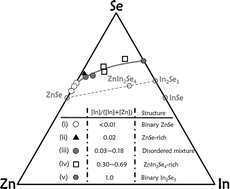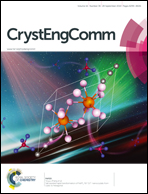Transition of crystallographic and electronic structures in In–Zn–Se alloys grown by molecular beam epitaxy
Abstract
In this work, we demonstrated the dependence of crystallographic characteristics and electronic structures on indium amounts in the indium–zinc–selenium alloy fabricated by vapour-phase deposition. By taking advantage of molecular beam epitaxy and a synchrotron radiation apparatus, it is shown for the first time that the significant difference in vapour pressure between zinc and indium induced zinc deficiency in the solid state and resulted in a transition of five distinct phases in the whole range of the alloy from zinc selenide to indium selenide. The binary ZnSe with indium dopants, the ZnSe-rich alloy with a minority of ZnIn2Se4, the disordered structure owing to the comparable mixture of ZnSe and ZnIn2Se4, the ZnIn2Se4-rich alloy with a minority of ZnSe, and the binary In2Se3 phase are separated by indium incorporation ratios of 0.01, 0.02, 0.18, and 0.69, respectively. Moreover, a pronounced carrier localisation effect was observed in the ZnSe-rich and the disordered mixture. The widely distributed mid-gap states were attributed to a high density of zinc vacancies in the ZnSe-based lattice. In brief, these fundamental properties show the feasibility of Se-based II–III2–VI4 alloys for optoelectronics.


 Please wait while we load your content...
Please wait while we load your content...